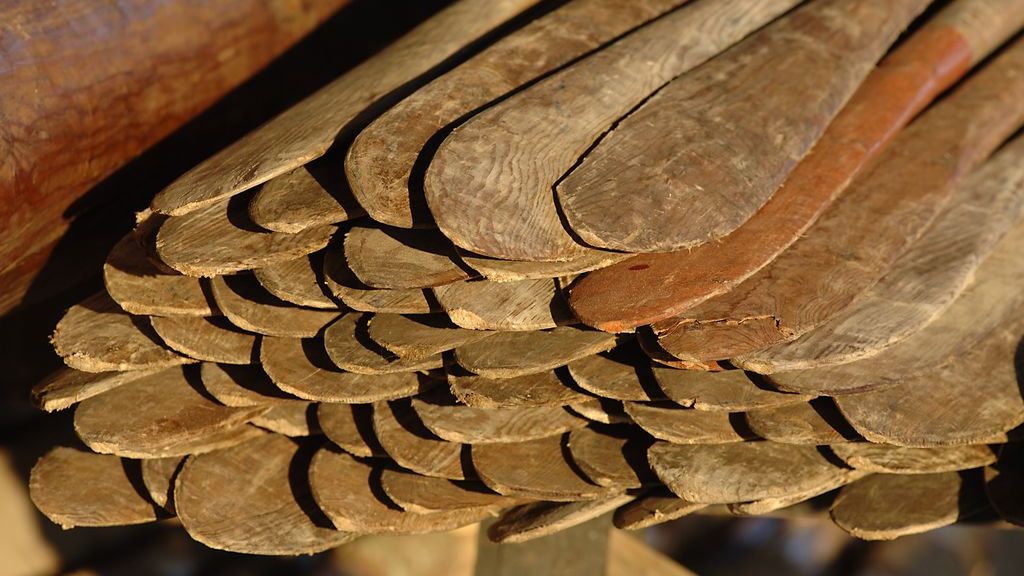Visitors to the museum can experience the ancient craftsmanship and meet the craftsperson who tells and shows how we recreate the Viking ships with the materials and techniques of the past. Depending on when you visit the museum, you can meet the Viking warrior, the boatbuilder, the black smith, the rope maker or the smelter.
War, battle and sharp weapons
Had you survived in the Viking Age? The Viking warrior shows off his impressive weapons and shows how to use them. Most Viking warriors were equipped with axes and shields, while the great man could have costly weapons, such as swords, helmets and chain mail. Martial arts have been a craft that one has learned and trained to become the best warrior and thus could hope to return home to the family after the expedition.
At the Viking Ship Museum, you can try your hand at the fighting techniques mastered by the Vikings during this special week. The warriors must be ready to defend the country against enemies, take part in a raid or fight in the service of the King
Ropemaker days
If you want to build a Viking ship like the Sea Stallion, you need 2 kilometers of handmade ropes. The ropemaker had an important role to play when the Vikings were to equip their ships. The ropemaker at the Viking Ship Museum make ropes of sealskin, wool and horse hair for the museum's boats.
Blacksmithingdays
The blacksmith provides a special insight into the difficult art of handling the red-hot iron.
The Viking Ship Museum's skilled blacksmiths shows their special techniques to the museum's guests who can come close to the complicated and mysterious smithing technique this week.
In the calender you can se, when the blacksmiting and the other craftmens show there craftworks thorw the summer.
The weaver
Without ships - no Viking Age. And without sails - no Viking ships! The large, square mainsail is also called the 'Dragon's Wing', because it was the sail that led the ornate longships across the oceans.
Not many people know that it takes at least as long to make a sail as it takes to build the ship on which it is to be hoisted. See how the weaver works with wool and linen, and weaves the long banners of tarpaulin to be sewn velvet for the large raw sails for the Viking ships.
Cooking in the Viking Age
What did the Vikings eat on the long expeditions, and what did they eat at home. There is no doubt that the food has been very important to the sailors on board the ships, so that they could withstand the cold and wind without getting exhausted. But the Vikings did not have access to the same raw materials that we have today.
So what raw materials were there in the Nordic countries in the Viking Age, how was the food prepared over a campfire, and how did the Vikings keep the food on the long voyages? The cook - or foodie, as he was called on board the longships - really had to know his craft so that there would be no hunger or disease on board.
When can you meet the craftsmen:
Meet the viking cook:
28th of June to 3th of July
Meet the blacksmith:
15th to 18th of July,
23th of July to 1th of August
5th and 6th of August
14th and 15th of August
Meet the Viking warrior:
5th og July to 11th of July
Meet the weaver:
4th of July,
12th to 14th of July
22nd of July
2rd of August to 4th of August
7th and 8th of August
Meet the ropemaker:
19th of July to 21st of July
9th of August to 13th of August





